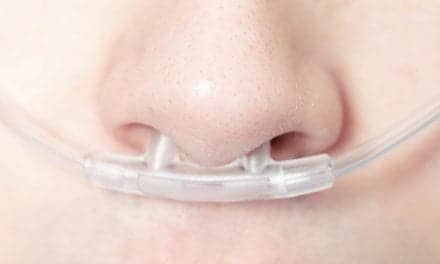Starting buprenorphine treatment for opioid use disorder through telehealth was associated with an increased likelihood of staying in treatment longer compared to starting treatment in a non-telehealth setting, according to a new study published in JAMA Network Open.
The research, analyzing Medicaid data from 2019-2020 in Kentucky and Ohio, adds to a growing body of evidence demonstrating positive outcomes associated with the use of telemedicine for the treatment of opioid use disorder.
In Kentucky, 48% of those who started buprenorphine treatment via telehealth remained in treatment for 90 continuous days, compared to 44% of those who started treatment in non-telehealth settings. In Ohio, 32% of those who started buprenorphine treatment via telehealth remained in treatment for 90 continuous days, compared to 28% of those who started treatment in non-telehealth settings.
The research was conducted as part of the HEALing Communities Study, the largest addiction prevention and treatment implementation study ever conducted, according to the National Institutes of Health (NIH), which is supported by the National Institute on Drug Abuse and carried out in partnership with the Substance Abuse and Mental Health Services Administration through the NIH’s Helping to End Addiction Long-term Initiative, or NIH HEAL Initiative.
“This study suggests that telehealth may increase treatment access and retention, strengthening the evidence that receiving addiction care through telehealth is to be safe and beneficial and that it should be made available to those who need it,” says Nora Volkow, MD, director of National Institute on Drug Abuse, in a release. “To quell the unprecedented loss of life from the overdose crisis, we must continue to prioritize both increasing access to treatment and providing the care and support people need to stay in treatment after they have started.”
Prior to 2020, people with opioid use disorder were required to meet in person with a health care provider to start treatment with buprenorphine. After the onset of the COVID-19 pandemic, the United States government implemented prescribing flexibilities to facilitate buprenorphine access for patients with opioid use disorder. These updated policies allowed clinicians to remotely prescribe buprenorphine to new patients via telehealth without conducting in-person examinations, expanded payment for telehealth services, and provided flexibility on accepted communication technologies to deliver clinical care for people with substance use disorders via telehealth.
To investigate the impact of these policy changes on patient outcomes, researchers led by a team at the University of Kentucky, Lexington, analyzed Medicaid claims and enrollment data from Nov 1, 2019, to Dec 31, 2020, for individuals aged 18 to 64 years in Kentucky and Ohio. They found that nearly 92,000 people within this dataset had a buprenorphine prescription in at least one quarter of 2020 and that nearly 43,000 of those people started treatment in 2020. They also found significant increases in telemedicine delivery of buprenorphine following the more permissive telehealth flexibilities implemented during the COVID-19 pandemic.
Because starting treatment with buprenorphine via telehealth was rare prior to and during the first quarter of 2020, researchers then looked at a smaller subset of data from individuals who started treatment with buprenorphine in either the second or third quarter of 2020, (including 9,172 people in Kentucky, and 12,328 people in Ohio). In both states, starting treatment via telemedicine was associated with higher likelihood of staying on treatment for a continuous 90 days.
The authors also found that receiving buprenorphine treatment via telehealth was not associated with an increased likelihood of nonfatal overdose, providing additional evidence to suggest that patients were not harmed by having increased access to buprenorphine treatment through telemedicine.
“The use of medications to treat opioid use disorder can be an incredibly effective method of reducing overdose deaths and helping people achieve recovery. However, for too many Americans, accessing these medications is incredibly difficult,” says Miriam E Delphin-Rittmon, PhD, the HHS assistant secretary for mental health and substance use and leader of Substance Abuse and Mental Health Services Administration, in a release. “This study shows that telehealth is another important tool for increasing access to this life-saving medication.”
Importantly, some groups were less likely to receive treatment for opioid use disorder via telehealth and were less likely to remain in treatment through the continuous 90-day period. These included non-Hispanic Black individuals, men, and those who had experienced a prior overdose involving opioids.
The authors note that additional research is needed to continue to examine the impact of telehealth on patient outcomes, beyond the Medicaid populations in Kentucky and Ohio and beyond the year 2020.
“Our study suggests that people who have access to telehealth treatment for addiction seem to do better than those who do not. Our hope is that these findings can help inform future policy,” says Lindsey Hammerslag, PhD, assistant professor at the University of Kentucky and lead author on the study, in a release. “In addition, the findings also emphasize that the benefits of telehealth are not reaching all populations equitably. As we continue to integrate telehealth into standard care, we must also investigate and address the barriers that are preventing people from accessing this helpful and effective form of treatment for opioid use disorder.”
Photo 181058094 © Juan Moyano | Dreamstime.com










